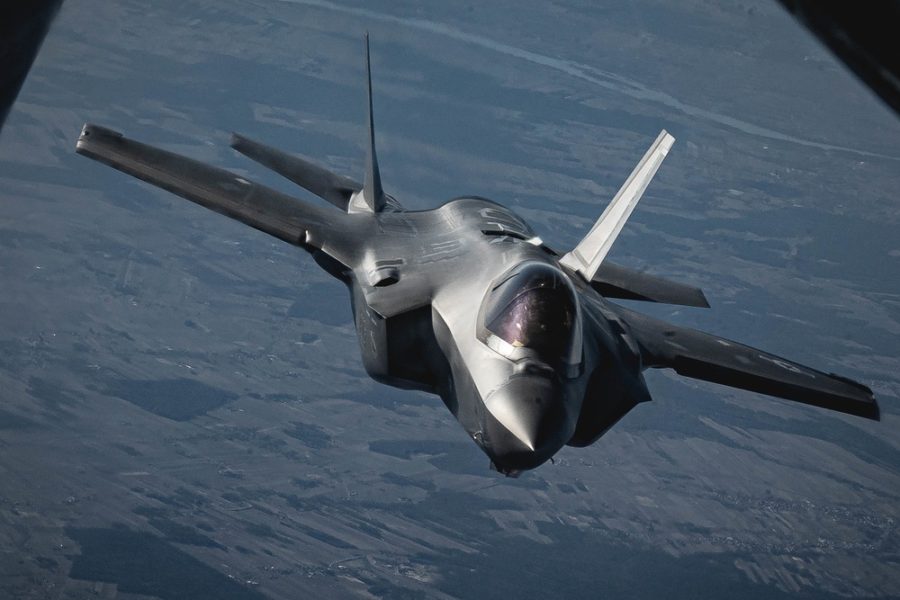As Russia’s invasion of Ukraine drags on and the U.S. and NATO continue to bolster their eastern front, the chairman of the Senate Armed Services Committee said he’ll be watching closely to see how the F-35 performs in Europe.
Speaking at a March 23 roundtable hosted by the Defense Writers Group, Sen. Jack Reed (D-R.I.) said he remains committed to building out the fighter fleet. At the same time, he hinted that the coming months could play a key role in building his confidence in the program, which has simultaneously struggled with cost overruns and sustainment issues while earning praise for its performance.
“I think once we have reached the point of validation, and particularly observing what they do in Europe, we can be more confident going forward with the system,” Reed said. “But you know, we’re committed to that system, to getting the squadrons full and having it be part of our operational Air Force, Marine Corps, Navy.”
Reed’s comments come just days after Bloomberg reported that the Defense Department is trimming its budget request in 2023 to procure just 61 F-35s instead of 94 as originally planned. That figure is also lower than the request for 85 fighters in 2022, the 85 requested in 2021, and the 98 funded in 2020.
Asked about Bloomberg’s report, Reed once again pointed to the tension between capabilities and sustainment as a question “the Air Force is asking.”
“I have heard glowing comments from pilots and operators of the capacity of the aircraft to perform. I’ve also heard, as you have, of issues of maintenance, issues of cost, of sustainment—there’s extreme costs in sustainment,” said Reed. “So these aircraft are highly capable. But the question that we have asked, and I think the Air Force is asking: Are they sustainable, durable? And until they answer those questions, I think they’re not going to rush in and acquire a significant number. They’re on pace to … acquire another group this year.”
Reed also pointed to potential production delays associated with the COVID-19 pandemic.
While the Pentagon’s budget request, set to roll out March 28, may include a reduced buy of F-35s, the Lightning II has featured in the NATO response to Russia’s Ukraine invasion.
The U.S. deployed F-35s from Hill Air Force Base, Utah, to Spangdahlem Air Base, Germany, on Feb. 16 to enhance NATO’s defense posture, and those jets were later sent to Romania and Poland, joining American F-15s and F-16s deployed there. The Netherlands also deployed a pair of its F-35s to Eastern Europe.
At the same time, Germany announced that it will buy 35 F-35s to bolster its air force as part of a larger overall boost in defense spending prompted by Russian aggression. Belgium, Denmark, Italy, the Netherlands, Norway, Poland, the United Kingdom, Finland, and Switzerland all are F-35 customers as well.
Just a few months prior, amid Russia’s buildup prior to invasion, the first American F-35 arrived in Europe as part of the 495th Fighter Squadron at RAF Lakenheath, U.K.
But even as the F-35 program continues to expand, Reed cautioned against celebrating it as a total success, saying there are lessons to be learned from its issues.
“Going back to the beginning of the F-35, it was—and you know, we’ve seen this before, so we should have been a little bit brighter, I guess—but it’s like the Swiss Army Knife of aircraft,” Reed said. “It’s for the Marine Corps—vertical lift. It’s for the Navy—carrier takeoff. It’s for the Air Force, who have a different context, and etc. And we took one aircraft, thought it would be cost effective to do one, and I think we’ve learned that that might not be the best approach.”
